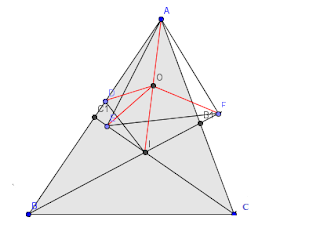The best way to learn mathematics is to DO mathematics. In fact we can add something more to that. The best way to get inspired about mathematics is to 'experience' beautiful mathematics.
In 2012 we are transforming our learning (and teaching) methods. Till today the basic style of our program comprised of:
In 2012 we are transforming our learning (and teaching) methods. Till today the basic style of our program comprised of:
- Inside Classroom
- a 3.5 hours session
- a diagnosis test in the beginning (25 points; 15 minutes; on the previous day's work)
- topic 1 discussion accompanied by a problem sheet - 1.5 hour
- topic 2 discussion accompanied by a problem sheet - 1.5 hour
- an effect test at the end (25 points; 15 minutes; on the current day's work)
- specification of homework; homework copy submission; returning of previous day's homework copy
- Outside Classroom
- Over phone and internet - round-the week support (our policy is - when a student calls we call back - this saves call charge for the student and allows him/her to discuss freely the queries)
- Continuous interaction with students through social networks and blogs
- Supporting Activities
- Seasonal coming-together where current students and alumni meet.
- Chess tournament, amateur math contests
- Alumni support - we engage with our ex-students in their mathematical pursuits
- Inside Classroom
- a 3.5 hours session
- a start-up test in the beginning (20 points; 15 minutes; motivation problem that will lead to current day's discussion)
- a discussion and problem solving session where we 'perform' about 10 olympiad caliber problems - 1.5 hour
- a topic centric discussion session accompanied by necessary problem sheet - 1.5 hour
- an effect test that will simultaneously 'take care of' current session and previous session's discussion
- a light-weight indication of home task; mandatory submission of homework copy; scrutinized homework copies goes back to student
- Outside Classroom
- Over phone and internet - round-the week support (our policy is - when a student calls we call back - this saves call charge for the student and allows him/her to discuss freely the queries)
- Continuous interaction with students through social networks and blogs
- Supporting Activities
- Mathematical Research Cell - Two or three intensive discussion sessions on algebraic geometry, analytical number theory, computer science and other advanced topics to kick-start research activity amongst our alumni (who are pursuing mathematics and computer science related courses at college or university level)
- At least two times a year get-together for current students, alumni and friends of Cheenta.
- Chess Tournaments, Math Contests, Computer Science contests
- Integration of ideas from Physics and Chemistry in the Junior Olympiad level mathematical program to provide an extended exposure to the students
- Full Length Tests on every alternate Saturday (round-the-year).
- Book - Club to share rare books related to Mathematics, Science and Literature




